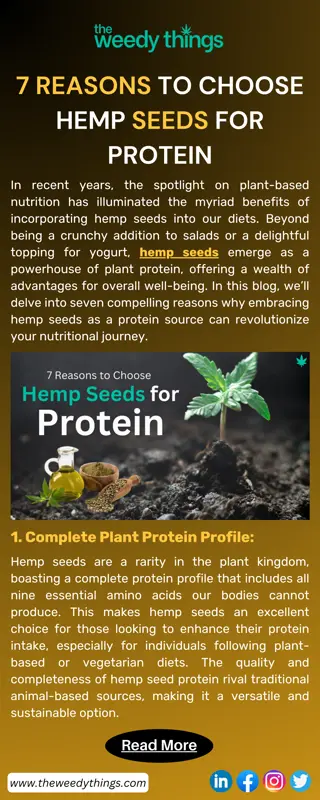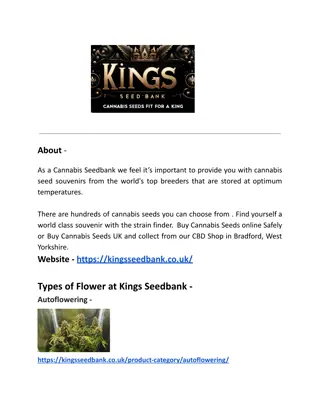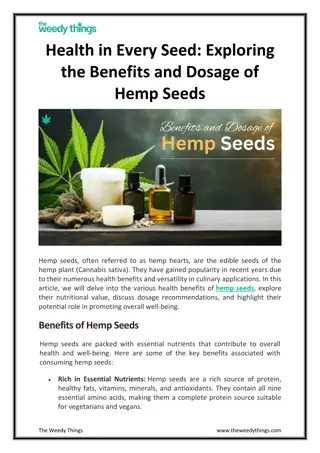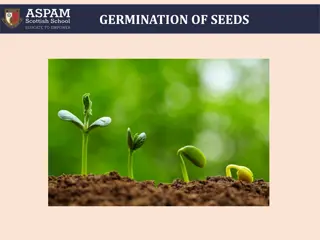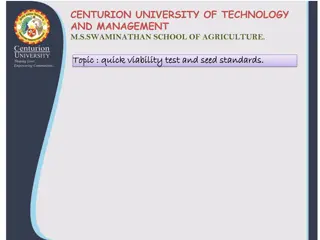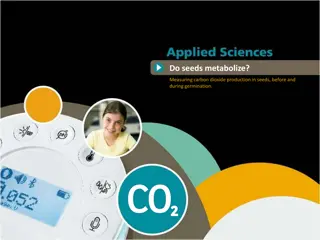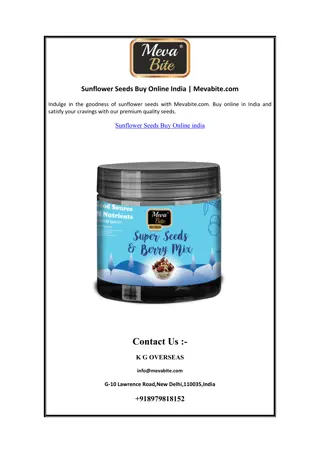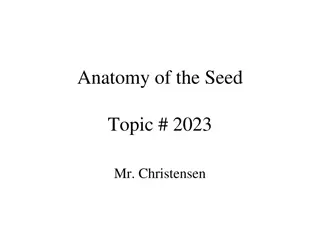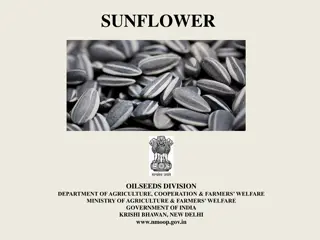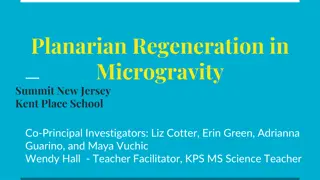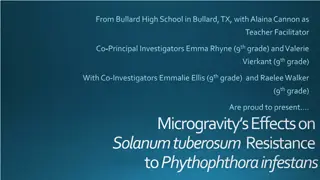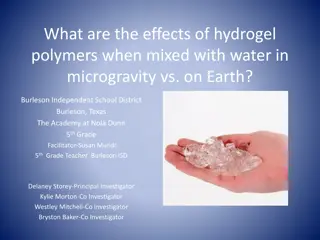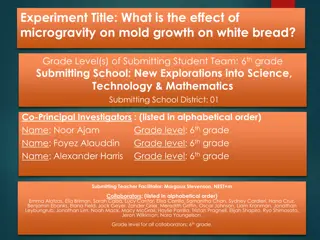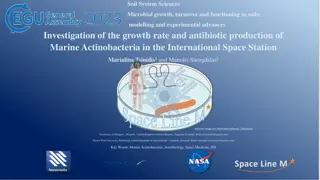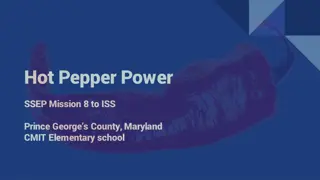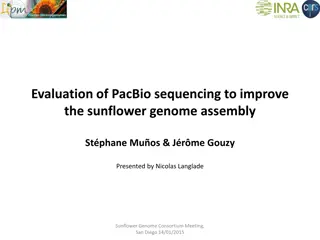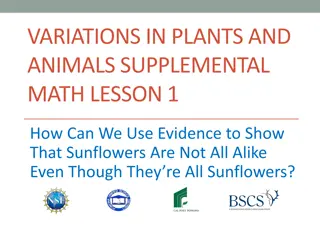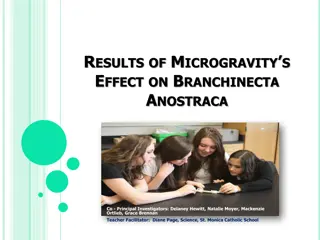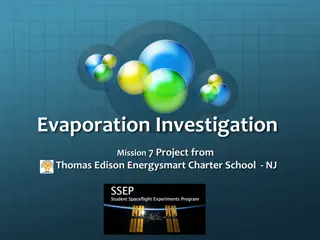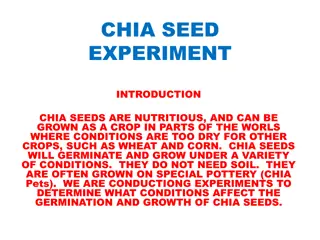Sunflower Seeds Germination Experiment in Microgravity
This experiment aims to test whether sunflower seeds can germinate in microgravity conditions. The project involves students from Crossroads Academy of Kansas City and explores the potential of growing sunflowers in space for their nutritional benefits. By examining the germination process in a controlled environment aboard the spacecraft, the team hopes to contribute insights into potential agricultural practices in space for astronauts' health and sustenance.
Download Presentation

Please find below an Image/Link to download the presentation.
The content on the website is provided AS IS for your information and personal use only. It may not be sold, licensed, or shared on other websites without obtaining consent from the author. Download presentation by click this link. If you encounter any issues during the download, it is possible that the publisher has removed the file from their server.
E N D
Presentation Transcript
Will Sunflower Seeds Grow in Microgravity Kansas City, MO Mission 7 Flight Experiment
Team Members Team: N.O.W.A.S.S.S.E.P Grade Level: 6th-7th grade School: Crossroads Academy of Kansas City Principal Investigator: Saul Rodriguez Co-Investigators: Kevin Alvarez Jorge Ortiz Collaborators: Michyla Westbrook-Samuels Nautica Wiggins Teacher Facilitator: Kristen Marriott, Crossroads Academy of Kansas City
Proposal Abstract Will sunflower seeds or Helianthus annuus germinate in microgravity? We think that the sunflower seeds will germinate in microgravity because, they are going to have purified water to help them germinate. We will open the clamp for the water and the seeds mix and shake for 10 seconds. We are doing this because sunflower seeds are healthy, and can be a source of food. When the FME comes down from microgravity, we will see if seeds have begun germination.
The Question to be Addressed The question that we are asking is will sunflowers ( Helianthus annuus) germinate in microgravity? This will be done in microgravity because we want to see if sunflower seeds will at least germinate so maybe NASA will grow sunflowers in space. Also, because they're healthy and edible. They are healthy because they control cell damage. They play a role in preventing cancer. They also have a good source of selenium, magnesium, and copper. They can keep you calm and lower your stress and blood pressure. They also are a good source of Vitamin E, which contains bone healthy minerals. Sunflower seeds can ease every condition that s inflammatory in nature. We also choose sunflower seeds because each flower produces a large amount of seeds. We think that if the sunflower can germinate in microgravity then it will also be able to grow so that the space station could have healthy sunflower seeds. We are testing germination instead of full plant growth because the FME is too small for a full grown sunflower to grow. Growing plants in space will be useful because we will know if plants and other natural things can germinate or even grow in microgravity. So if the sunflower germinates then we will know that it is possible for fruit plants or vegetables to grow as well. Also it will be healthy for the astronauts to eat fruits and vegetables instead of fattening foods.
Experiment Materials Fluids Mixing Enclosure (FME) Type proposed to be used: Type 3 FME List of Proposed Experiment Samples Volume 1 3.5 milliliters of purified water Volume 2 6 sunflower seeds (Helianthus annuus) Volume 3 3 milliliters of 10% neutral buffered formalin Proposed Timeline of Crew Interactions U=14 :Open Clamp A, shake vigorously for 10 seconds U=2 :Open Clamp B, shake vigorously for 10 seconds
Experiment Design This proposed experiment will address the question posed because if the seeds germinate and grow roots then you will know that sunflowers can grow without gravity. Our materials are six sunflower seeds, 3.5 milliliters of purified water, 3 milliliters of 10% Neutral buffered formalin. We chose to use six sunflower seeds incase any of them die before they get to the ISS, we can still use the others to see if they will germinate. We chose purified water because that s what they use in the space station. We chose not to include potting soil because the sunflower seeds grew without it. We will use 10% Neutral buffered formalin because we needed a fixative for stopping the plant growth before leaving the ISS so we can tell if it grew in microgravity instead of on Earth. We will use 3 milliliters of 10% neutral buffered formalin because it doesn t only stop the growth of the sunflower seedling but, it preserves it as well. We are doing this same experiment at the same time on earth because we want to compare if the sunflower will germinate more on earth or in microgravity. The experiment done on Earth is called the ground truth experiment. This will allow gravity to become the independent variable. We recently completed an experiment to see if the sunflower seeds would germinate in the FME. We found out that they germinated both with and without potting soil. Therefore we chose to omit the soil from the FME, allowing more space for water. We chose to open the clamp two weeks before the FME leaves the ISS, because it takes about 5 days for the seeds to germinate, we want the seeds to have two weeks to germinate and the roots to grow.
Procedure Loading the FME: 1. First, we re going to put 3.5 milliliters of purified water into volume 1. 2. Next, we re going to put 6 sunflower seeds into volume 2. 3. Last, we re going to put 3 milliliters of 10% neutral buffered formalin into volume 3. 4. We will record the mass of the seeds on a table before placing them into the FME. The mass of the seeds before we put them in the FME was 0.1 grams and we will measure the grams of the seeds again when they return. Procedures aboard the ISS: 1. Two weeks before the FME leaves the ISS, unclamp clamp A and shake for 10 seconds. 2. While the FME experiment is being conducted on the ISS, we are going to do the same experiment here on earth. 3. Before leaving the ISS clamp B will be opened with the 10% Neutral Buffered Formulation to get into the seeds to prevent them from growing and preserves the seeds once returning to earth. We will open clamp B on earth at this time as well. 4. After the FME returns to Earth, we will record take measurements of the roots and mass of the seeds from both Earth and the FME on the ISS. We will record our observations on how big the roots got in millimeters and the mass of the seed in grams on tables.
Acknowledgements We would like to acknowledge the following organizations for helping make SSEP KC Mission 7 a reality; Participating Schools: Benjamin Banneker Charter Academy of Technology Acad mie Lafayette St. Peter s School Alta Vista Charter School Crossroads Academy of Kansas City Sponsors: aSTEAM Village The Black Economic Union Of Kansas City University of Central Missouri DBA: Distribution By Air National Center for Earth and Space Science Education Microsoft The Smithsonian National Air and Space Museum Center for the Advancement of Science in Space Subaru of America


